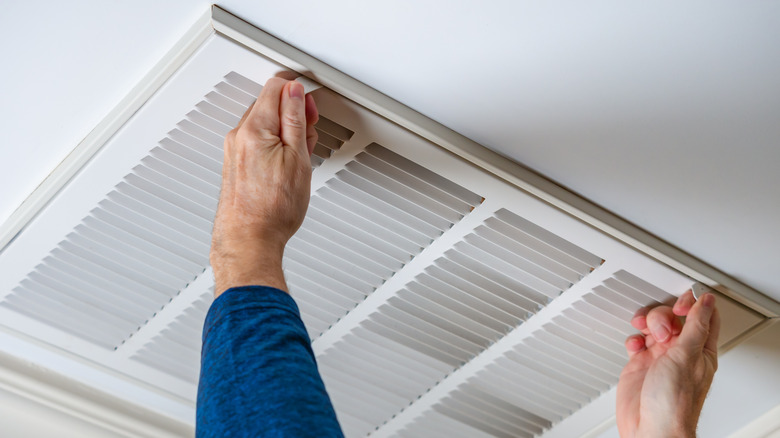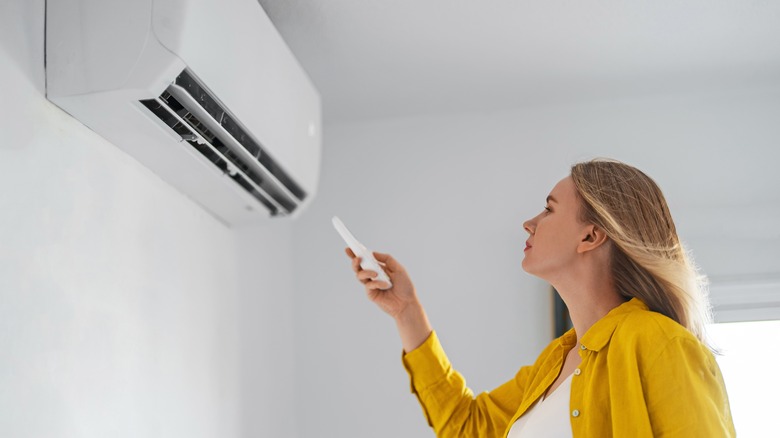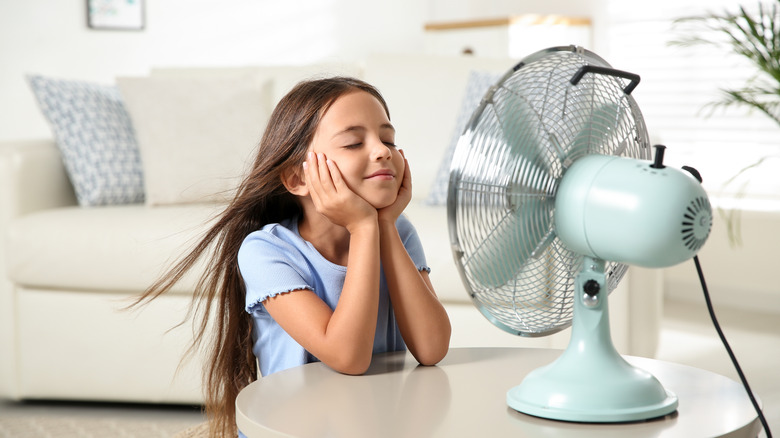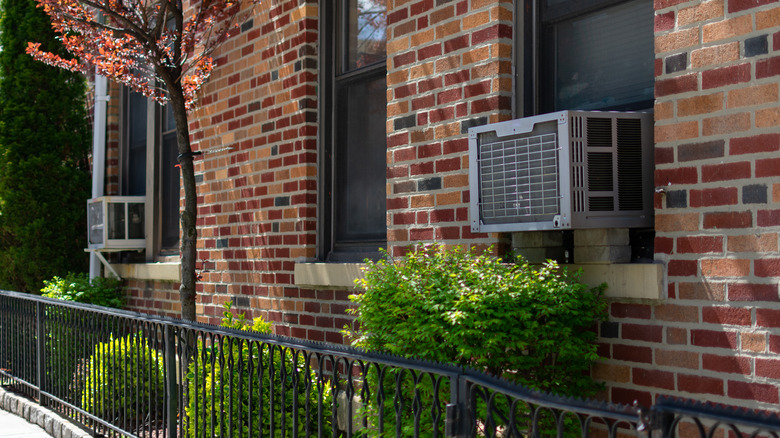What Are The Five Types Of Air Conditioning?
Air conditioning is an important feature in a modern home. Today, roughly 90% of American homes use some AC system, according to Energy Institute at Haas. If you've recently moved into a new property that doesn't include a central air conditioning system or another alternative, finding a solution to help you get through the hottest part of the year is critical. With temperatures rising all across the globe, the importance of air conditioning is only going to become more dramatic as time continues to march on.
Fortunately, there are many different ways to cool down a home. From natural solutions that facilitate heat transfer into the exterior space beyond your property to the highly technical features of a modern central air conditioning system that uses separate components in the fan, compressor unit, and ductwork to move conditioned air throughout the home, there are many ways to go about creating this amenity. With these five types of air conditioning in mind, there will always be an option for you to keep your home comfortable and cool, no matter what the weather outside is like. Continue reading to learn more about this critical tool and a few ways that you can implement it in your property.
Central, duct-based air conditioning systems
The most prominent air conditioning system that many homeowners are familiar with is the central AC unit that pumps air through the home via ducts in the attic and wall spaces. Central air conditioning is the most efficient way of cooling the home, according to Actron Air. However, due to the invasive process of building a central air conditioning system in a home that doesn't already use one, this cooling facility can be exorbitantly expensive to install.
A central air conditioning system is immensely useful for homeowners who live in parts of the country that see both substantial heat and cold throughout the year. A central AC system can pump either hot or cold air through the ducts and into the living space of a property. This air conditioning system requires a boxed AC unit that lives outdoors. The U.S. Department of Energy notes that this unit will typically last in a home for 15 to 20 years before requiring a replacement. This makes central heating and cooling a durable installation that provides consistent climate control over the course of a very long period of time. These AC systems are highly complex, however. In addition to the outdoor unit, you'll need an air compressor and many other integrated parts installed in your attic.
Ductless split systems
A ductless split system is another high-quality option that will provide longevity in heating or cooling your home throughout the year. Ductless split systems don't require a tear out of your attic or interior wall dimensions. Instead, a split system gets its name because the system itself is split into two primary components. The fan is located on your wall inside the home and blows cool air into your space. The second component is installed outside the home on the other end of a nearby exterior wall, according to Jamco Heating & Air Conditioning.
To understand how this system works, consider how heat transfer takes place. Hot and cold air cannot be transformed from one into the other. Instead, a space settles into an equilibrium temperature based on the amount of heat in the air. To cool off a space, you'll need to move heat out of the room. Similarly, to heat a space, you are really applying heat to the air or a surface to drive colder equilibrium temperatures away from the target space (swapping the absence of heat for its presence). The exterior unit is used to facilitate this differential. When cooling the interior of your home, the outdoor component expels hot air from the AC system, while the fan indoors blows cold air into your room.
Portable fans or AC towers
Another type of air conditioning is the portable fan or AC tower. These portable cooling systems operate with all of the required components built into a single device. They can be sophisticated and blow cold air alongside the fan power that they bring to bear or be built as a simple means of moving stagnant air around the room to cool off the people inside the space in the process. Entek Corporation notes that a simple fan won't change the temperature in a room but will give you a cool breeze that can be immensely beneficial during a hot and sticky day.
One or more fans can be used successfully to facilitate substantial heat transfer out of your property during a hot summer day. If you live in a two-story home, opening the windows in rooms on the first and second floor and then using fans to blow air through the property will create a wind effect that helps to hasten the rising power of hot air and then push it out of the upper floor window. This will help negate the effects of a roasting summer day without using sophisticated equipment that may cost an arm and a leg. This type of practical science is also essential knowledge in the event of a power outage or air conditioning failure in your home.
Window units
A window unit is perhaps the last traditional option for a standard air conditioning solution in the home. Window units are installed with the heat transfer element outside the house, sticking through an opened window. Window units are great for small apartments and individual rooms that require additional cooling consideration (via CNET). They won't make an enormous impact when it comes to cooling off an entire home but provide a critical service in a pinch or as the primary cooling option for a small home or apartment.
To install a window unit, you'll need to open your window and place the box in the opening. Then, you close the window on top of the air conditioner to lock the feature into place. Window-based air conditioners are an excellent option for homeowners thinking of installing individual space units in their homes. The alternative is a wall unit or a mini-split system that will require modifications to the property. By contrast, a window-mounted air conditioner doesn't demand cutting, drilling, or any other type of property alteration. This makes it a good choice for renters who need additional cooling power but can't alter the home's overall floor plan or footprint.
DIY cooling systems
DIY cooling systems are another choice for cooling off your property. DIY options aren't suitable for long-term use, but they can make an enormous difference in the event of a power outage or natural disaster that leaves you without your primary cooling system for a short length time period.
To create your own makeshift cooling system, you'll need to establish a means of cooling the air inside a compartment and then pushing it out into the room. One option is to use a standard cooler and dry ice explains The Renaissance Builder via YouTube. Unlike traditional ice cubes from your freezer, dry ice will remain cold for many hours. Placing dry ice inside a cooling box and cutting a hole in the side will create a way for the cold air inside to escape into your room. Adding piping or tubing on the end will help direct the cold air to wherever you need it to go. Then, on the other end, you'll want to cut a small hole and position a small fan facing inward to help speed along the heat transfer process. A battery-powered fan is all it will take to blow this cold air out into your home.
Always practice caution when using dry ice, as it can be dangerous. For an easier DIY, try using a bowl of traditional ice with a battery-powered fan behind it to blow the cold air (via Entek Corporation).





